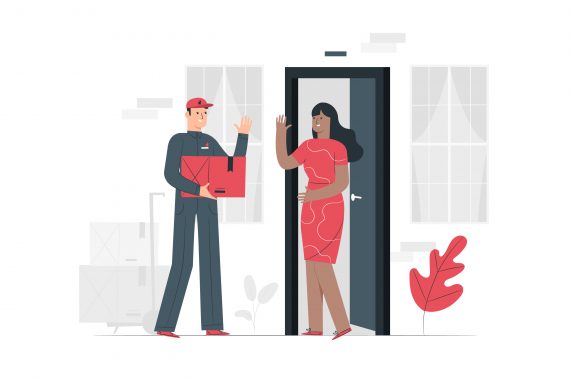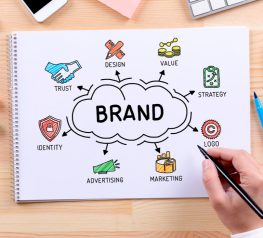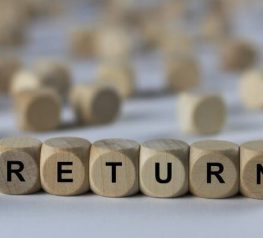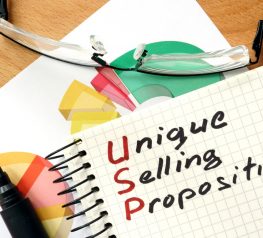Guide to E-Commerce Order Fulfillment for Retailers
Are you starting an online store? It’s a great way to make a living, either as your main income or a side job. However, you’ll need to learn about the different types of e-commerce order fulfillment. This refers to the entire process of an online shopper purchasing and receiving an item they got from your online store.
A Quick Look at the Order Fulfillment Process
Let’s take a moment to review the order fulfillment process for e-commerce. Here are the steps:
- Choosing products for your inventory – Before you can even make a sale, you need products to sell. If you’re using in-house order fulfillment, then you’ll need to have the inventory on-hand. On the other hand, if you’ve decided to use an outsourced model for order fulfillment, then you’ll need to have a provider that can handle these logistics on your behalf.
- Storing the inventory – If you’re a startup or don’t have a lot of capital, then you can simply store it in your house or garage (provided that it’s not perishable and doesn’t need refrigeration). If you’ve scaled up, then you can put the money down for warehouse or storage space. Storage best practices dictate that you devote a unique number (or SKU) to each product so that you can properly store and track inventory.
- Processing the orders – Once the online shopper makes an order, it must be processed. This includes retrieving the items from storage, packing them, and then addressing them to the final customer. Most frequently, this is done at an e-commerce fulfillment center and is a labor-intensive process. Processing best practices dictate that you use packing slips, so that you can track all of this important information – this includes quantity, address, shipping method, and special packing instructions.
- Shipping the orders – Once the order is processed, the retailer has to actually get it to the customer. You can either take it to a post office or UPS/FEDEX store or have carriers pick it up from your e-commerce fulfillment center. Of course, the higher volume of shipping you do, the more competitive rates you can get from the carriers.
As you can see from the steps above, e-commerce order fulfillment refers to the entire process, from stocking your online store to shipping the product to the end customer.
What Are The Different Types of Order Fulfillment?
There are five different types of e-commerce models, each of which have different forms of order fulfillment. So let’s break them down and take a closer look:
In-House Order Fulfillment
With the in-house order fulfillment process, a business uses its own employees to manage the order fulfillment process. This includes storing, packing, and shipping the products at a location controlled by the retailer.
Some home-based startups start out using in-house fulfillment as a low-cost option, particularly those with small order volumes. As they outgrow their initial space, many move to outsourced or hybrid fulfillment models. In fact, one of the main benefits of this fulfillment model is that the retailer has a lot of control over the whole process.
Third-Party Logistics (3PL)
The opposite of in-house order fulfillment would be outsourced order fulfillment or using a third-party logistics provider (3PL).
If you outsource your order fulfillment, you can use third-party logistics (3PL) companies. This is when shipping, storing and the order fulfillment process is not handled by your company. Retailers without a lot of warehouse space or that run a smaller operation may choose this option. This is because the order fulfillment process is extremely labor and time-intensive, so having a 3PL handle the logistics can streamline the store’s operation.
In this case, the 3PL personnel handle the entire fulfillment process from beginning to end, including receiving inventory from manufacturers and delivering orders to the customer. Plus, all products are stored in a storage space or warehouse controlled by the 3PL, meaning companies that use outsourced fulfillment don’t need to invest in their own warehouse facilities. This is especially crucial if you’re selling fragile or perishable goods. For instance, if your online store carries food and beverage, then the 3PL will adhere to storage and shipping best practices to keep products fresh and intact.
Dropshipping
This is another kind of outsourced order fulfillment model that’s quite common. With dropshipping, the online retailer does not actually keep the inventory it sells in stock. Instead, the inventory logistics and the order fulfillment process are both handled by the dropshipping supplier. This means that the supplier is responsible for storing, packing, and shipping the products to the end customer.
As a result, the benefits of dropshipping include the fact that it’s a low-risk model – for instance, you’ll never get stuck with unsold surplus inventory. That’s because you only order the products you sell from your supplier. Plus, dropshipping does not require lots of startup or operational capital. As a result, this is especially popular for newer e-commerce retailers.
Your dropshipping supplier can be the manufacturer, but it’s usually a company that gets inventory from manufacturers and then sells to online retailers at wholesale prices. For instance, GreenDropShip is a US-based dropshipping supplier with over 20,000 natural and organic products. Not only do we offer dropshipping services, but you can also use us as a wholesaler and buy products for resale in bulk.
Remember that the dropshipping supplier handles all orders and ships them to your customers, meaning you only pay for the products you sell. Plus, your dropshipping supplier handles inventory storage, frequently in the same location that they ship from.
Fulfillment by Amazon (FBA)
Fulfillment By Amazon (FBA) is a service provided by Amazon that provides storage, packaging, and shipping assistance to sellers. This program allows sellers to ship their merchandise to an Amazon fulfillment center, where items are stored in warehouses until they are sold.
As a form of outsourced order fulfillment, this is similar to both dropshipping and 3PL. However, the major benefits to FBA are that you can gain access to Amazon’s huge customer base, well-known reputation, and excellent customer service.
Hybrid Order Fulfillment Model
Some companies use a mix of e-commerce order fulfillment options, resulting in a hybrid fulfillment model. For instance, a retailer may process some orders in-house, such as custom items or items that must be assembled, while using dropshipping for other products. Additionally, using dropshipping is preferred for items that are not commonly bought or inventory that the retailer doesn’t want to store in-house (large or expensive items for example). This makes it ideal for companies that need more flexibility or are rapidly expanding.
If you’d like to use a hybrid e-commerce business model, a supplier like GreenDropShip is an excellent choice. We offer an inventory of over 20,000 natural and organic products that you can sell by becoming a member. We offer dropshipping as well as Amazon FBA prep services. Finally, we can also operate like a conventional wholesaler, meaning you can also buy in bulk from us if you prefer to handle yourself the inventory.
Why You Should Choose Dropshipping as Your E-Commerce Order Fulfillment Strategy
Here are the main reasons why dropshipping is the easiest method of order fulfillment for an e-commerce site:
- You don’t have to handle inventory. This is known as a “zero inventory supply chain” and the dropshipping supplier oversees your inventory.
- The supplier packs the products. While this may seem like a minor part of the process, it’s actually critical. This is especially helpful if you’re dealing with perishable or fragile products that need to be packed safely and effectively. A supplier like GreenDropShip specializes in packaging that’s been developed for food and perishable items.
- The supplier can handle a higher volume of orders. This is because online shoppers expect their packages to arrive ASAP, so the supply chain has to move quickly and with minimal delays.
- The supplier ships the product directly to the consumer. Remember, dropshipping is a kind of outsourced order fulfillment, so you don’t have to handle this labor.
- You’ll have more time to focus on marketing. Working with a dropshipping supplier means that you don’t need to handle these logistics. Instead, you can focus on marketing and driving traffic to your online store in order to get sales. You can launch an ad campaign with Google Ads or Facebook Ads as well as bump up your ranking in search results with search engine optimization (SEO).
How To Fulfill E-Commerce Orders with Dropshipping
The process of order fulfillment in dropshipping stores is made up of multiple steps. It’s a critical part of the supply chain, so let’s take a moment to go over these steps in detail.
Step 1 – The customer places an order on your online store
Let’s assume you have a customer named John Q. He visits your e-commerce store and looks over your products. He chooses the items he wants and places the order. You’ll have a payment gateway set up and he’ll choose how he wants to pay. Once he does that, John Q will get an email confirming his order.
Step 2 – You order the items from the dropshipping supplier
Now that you have John’s order, you’ll have to go to your dropshipping dashboard and place that order with the dropshipping supplier. If you use GreenDropShip as your supplier, you log into the members dashboard, look for the SKU number, add the item to your cart and use John Q’s address during checkout. Your profit will be the difference between the supplier wholesale price and the price you set on your website. If you want, you can use the manufacturer’s suggested retail price (MSRP).
Step 3 – The dropshipping supplier packs and ships the product
After you place the order or transfer it to your dropshipping supplier, they will:
- Process your order. This varies from supplier to supplier, but shouldn’t be longer than a few business days.
- Pack the product. Some products need special packaging if they’re fragile or perishable.
- Label the package. It has to be the right delivery address, otherwise, it’ll be late!
- Send the package to John Q. This will be on your behalf – John Q won’t know that you have a dropshipping supplier.
Make sure you ask your supplier how long their lead-time is – this is how long it takes them from getting the order to shipping it out. A good dropshipping supplier should take no longer than one (1) to three (3) business days between receiving and shipping the order that you make.
In some cases, it may take longer, but this is usually only if the product is on backorder or if there are certain types of products that must be packed and shipped in a very specific way.
Step 4 – The customer gets the product delivered
This is the final step when John Q. receives the package.
Your supplier GreenDropShip will also provide tracking info so that your customer is aware of where the package is. Keeping your customers waiting will hurt your business, as faster orders result in fewer abandoned carts, a higher average order value, and more repeat purchases.
It’s important to remember that this process is slightly different if you use in-house order fulfillment (ordering in bulk from a wholesaler). In these cases, as the retailer, you will be responsible for storing, packing, and shipping inventory. If you’re selling perishables like food and beverage, then you need to have climate-controlled storage and follow storage best practices to avoid shipping expired or spoiled items. Of course, this makes the order fulfillment process more costly as well as labor and time-intensive.
If you need a supplier that will make the e-commerce order fulfillment process quick, efficient, and easy, then GreenDropShip is the right supplier for you. We have over 20,000 natural and organic products that are made in the USA.
Be sure to contact a rep today and make your order fulfillment process easy and convenient.









